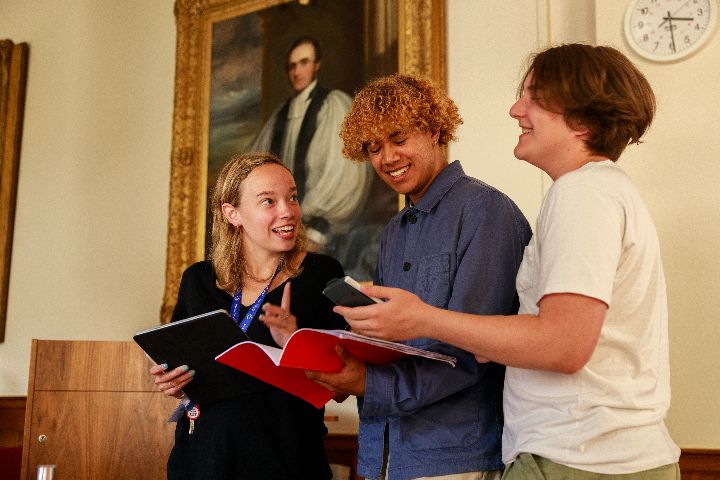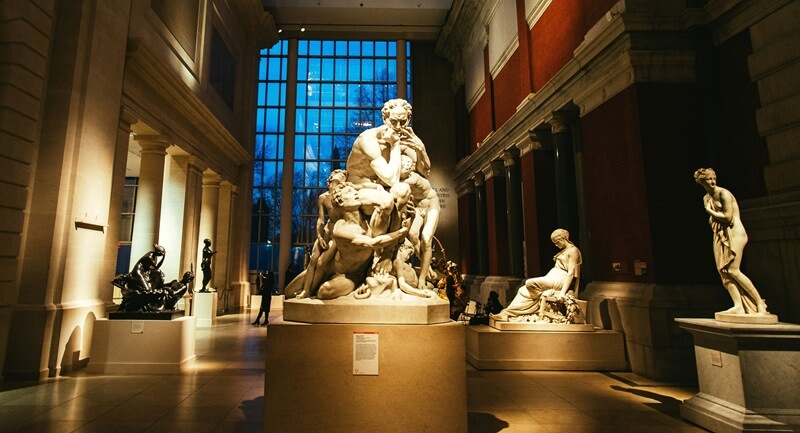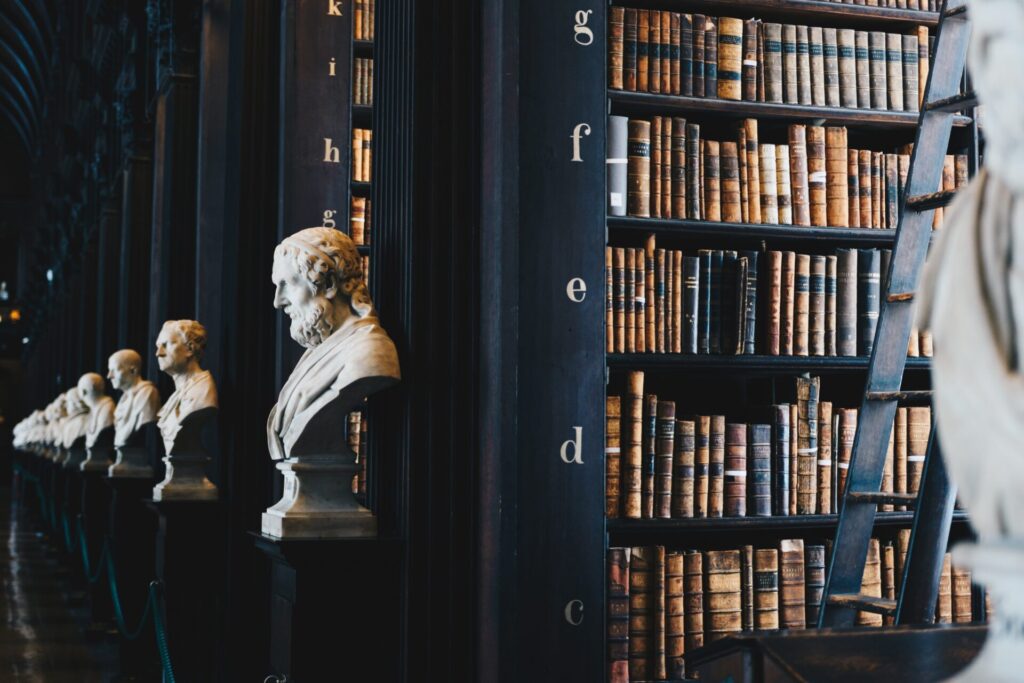What are the moments in the history of physics that stand out?
As per its nature, science strives for the glittering ideal of truth by constantly reassessing, and redefining its position so that it may sidle ever closer. Physics, the study of motion and interaction, is no different.
Like a diligent scribe, physics duly adapts to each mumbled correction of the story dictated to it by the universe.
Here, we recognise a few of those corrections in the history of Physics that helped to untangle the plot of this wild and ancient tale of all the matter in existence.
1. Discovery of Atomic Nucleus
Splitting the atom, both figuratively and later literally, changed our world. Matter, or ‘stuff’ as we call it in the business, is everything before us in our everyday lives. Take it all apart, and you get smaller things.
Keep cutting and slicing away at the fragments; you’ll find ever smaller things. Smaller and smaller. Seemingly forever.
Related Read: Top Universities For Physics In The UK
Eventually, the tiny blob of matter on your worktop will be smaller than the blade of the knife you used to cut it.
Even the fanciest, most sciencey knives won’t cut it, leaving you and your Wednesday afternoon at a bit of a loose end. At that point, the people living before the late 19th century christened the thing-too-small-to-be-cut the ‘atom’, from the Greek atomos, which means ‘indivisible’.
Ernest Rutherford & His Involvements
Ernest Rutherford and his colleagues changed our view of the matter by daring to divide the indivisible. These physicists discovered the electron and the positively charged nucleus before unearthing the proton and the neutron, which made up the latter.
The resulting Rutherford-Bohr Model of the atom laid the groundwork for nuclear physics and its applications for years to come. Why is understanding atoms so important? Because everything we see and touch and smell is built of atoms.
Related Read: Physics Career Prospects For Aspiring Students
The sun’s radiation bathes us daily because of the collisions of atomic nuclei. Our very society is fuelled by the energy of electrons, deserting their nuclei to go on cool electronic adventures.
And that energy is given to those electrons by manipulating atoms before some electromagnetic trickery. Nuclear physics gave us nuclear power. Nuclear power could, one day, give us the capacity for near-perfectly efficient energy generation.
In my view, no scientific field or allied discipline would be quite the same if we didn’t understand the atom as we do. If you’re looking to learn Medicine and Engineering, you’ll learn to use nuclear decay and the subsequent radiation.
2. Galileo’s Leaning Tower of Pisa experiment
If you’ve ever stood on top of a tall building to take in a view, you’ve probably considered dropping something over the edge. A mischievous, impish thought. Maybe you’d drop your phone or an empty coffee cup – to watch it spin down, out of sight. Please don’t do it.
But if you were to drop both an empty, paper coffee cup and your slightly cracked, beaten smartphone, which would fall faster? Conventional wisdom would lead most of us to say, “The phone, it’s heavier!”
Galileo disagreed, proposing that all things accelerate toward the Earth at the same speed, regardless of their mass.
You May Like: How Fast Did The Concorde Go?
It’s the shape of the objects and the air resistance caused by it that leads to different landing times. Crazy, I know. But then an astronaut dropped a hammer and a feather on the Moon, with no air to be found.
In 1971, Commander David Scott dropped a hammer and a feather simultaneously at the end of the Apollo 15 mission to the Moon. And they landed on the lunar surface. At the same time, proving that Galileo Galilei had been correct four centuries earlier, after dropping balls from the top of the Leaning Tower of Pisa and scribbling down some calculations.
This seemingly trivial idea, this quirk of mechanics became an indispensable principle for space exploration, satellite engineering, and aeronautical engineering. Basically, in any field where something will fall, the fact that its shape alone determines how much it accelerates is very useful information.
3. Heliocentrism
Today, every child knows that the Earth moves around the Sun. But back in 16th century Europe, it was widely accepted that the Earth was the centre of the universe.
And who could blame them?
Astronomers would look up at the sky and see the Sun and the planets moving across the sky. If everything on this planet seems still if there’s no evidence of movement, why not suppose that we were stationary and everything else on the move?
This makes Nicolaus Copernicus’ contribution, his bold proposal that the Earth and planets orbited the sun, all the more impressive.
Related Read: How Hard Is Physics A-Level?
He defied established consensus and common sense, looking beyond the obvious conclusions he could have made. So radical was this model of the solar system, that our man Galileo was later persecuted as a heretic by the Catholic Church because he supported it!
Nicolaus Copernicus was not the first to propose a heliocentric model of the solar system, with the planets revolving around the Sun. Still, his book inspired and influenced the astronomers of the Renaissance to shape the theories of today. Galileo, Kepler, and Newton all penned theories influenced by Copernicus, improving our understanding of planetary motion and how the solar system behaves.
Many natural occurrences and mysteries were explained by moving the Earth away from the centre. We now understand how seasons work, and why other planets appear to change direction across our sky.
And these theories springing from Copernican Heliocentrism enabled astronauts, engineers, and scientists of assorted fields to predict the motion of our spacecraft and any celestial bodies they may encounter. Now they can navigate the universe beyond solid Earth without flying blind.
Join the Immerse Education 2025 Essay Competition
Follow the instructions to write and submit your best essay for a chance to be awarded a 100% scholarship.

4. Discovery of Electromagnetic Induction
Electrical power underpins nearly all domains in today’s society, but it was only a scientific curiosity in the age of gas and fire.
All our electrical generators today operate by creating some form of motion. We spin turbines in wind and water and steam from the heat of burning coals or crumbling nuclei. But how do we translate those spinning turbines into electricity?
Well, we do it the way we always have, the way Michael Faraday discovered, followed by Joseph Henry a year later.
The idea alluded to is that of electromagnetic induction, which draws on the idea that a changing magnetic field across an electrical conductor will elicit an electrical current, which can be used elsewhere.
Needless to say, this principle is with us still, indispensable in our modern way of life. Faraday and Henry showed us the way to efficiently powering our day-to-day lives, although they had no idea of this at the time.
Today, we can generate rotation in some spinny thing before hooking up the spinny thing to some wire in a tunnel of magnets, and letting that rotate too.
Soon, the motion and magnetic field combine, resulting in an induced electrical current. Electromagnetic induction is a vital principle in electrical engineering, the distribution of electricity with transformers, and everything fuelled by those gleefully excited electrons.
5. Albert Einstein’s Theory of Everything
No list of achievements in physics could ever approach completeness without a contribution from Albert Einstein. We all know his name and photograph, and we can all spout a few words associated with the man. But what did he do to alter the fabric of physics?
Funnily enough, he described the fabric of our reality more completely and accurately than anyone before him.
His theory of relativity was not perfect by any means. Still, in attempting to explain how energy, mass, and motion relate to one another, he laid the groundwork for that fabled, unified Theory of Everything that may one day describe how matter interacts in all scenarios across the universe.
I will not pretend to understand Einstein’s theory of relativity fully.
But in making the physics of electromagnetism compatible with Newtonian mechanics and then chucking in gravity for good measure, he drew physics as a whole closer to the ideal of an overarching, coherent picture of the universe.
His theory has led to better explanations of some of the everyday effects we see in our lives, like light and colour, as well as the extreme phenomena of black holes and supernovae.
And the work isn’t done yet! I suppose that’s the true measure of an exciting theory – it creates questions we would never have asked.
Specifically, the elementary particles of the universe, the smallest of the small, don’t obey Einstein’s laws of General Relativity, requiring the use of the older equations of Special Relativity. The complete picture, the mythical ‘Theory of Everything’ remains elusive.
6. Quantum Mechanics
Light. We all know it’s the stuff that comes in beams from bulbs, screens, and suns. It keeps our pretty blue-and-green rock warm and photosynthesising. It… is actually a highly complex entity that behaves, almost paradoxically, as a wave or a particle, depending on the circumstance. This complexity, in part, illuminated a whole new field of physics. Pun proudly intended.
By exploring the nature of light, physicists uncovered the startling reality that the smallest things in our universe are weird.
They don’t follow the same rules as their larger cousins, and we still don’t fully understand how to make these two sets of rules work together. I’m talking, esteemed fellow humans, about quantum mechanics.
Beginning with Planck’s 1900 theory that light energy can be absorbed in discrete packets of energy known as ‘quanta’, a swarm of physicists began exploring and defining this new science of the very, very small. Quantum mechanics has been used to predict the existence of fundamental particles, the smallest building blocks of the universe that we know of.
One day, this field could help to marry the two arms of Einstein’s theory of relativity – or do away with it all together! No candidate for a comprehensive ‘Theory of Everything’ can claim that title without a confirmatory nod from the equations of the quantum world.
The problem is, however, that it’s really, really hard to appease and unite all the laws of physics!
Furthermore, applied quantum mechanics has led to some fantastic ideas and innovations, many of which we would struggle to do without. MRI scanners, electron microscopes, and many pieces of computing technology like the humble flash drive.
Physics – The Purest Form of Science
Physics may seem like a dry, boring field limited to crumbling chalk on a weathered blackboard. But, as I hope I’ve conveyed, the Bohrs of this world have achieved some incredible feats. I believe physics is the purest science, in what it attempts to investigate.
It simply tries to describe our universe, without the trappings of life and covalent bonds.
Physics asks questions that are, at once, higher concepts and more fundamental than that which fizzes or breathes. Instead, it prods at existence and scribbles down its notes so that the other sciences have a governed, understood the reality of standing and building on.
It asks why the universe is; how it is; where it shall go. Indeed, we need only to look at the history of physics to see that it’s an inquisitive beast but also one which changes its skin on far more occasions than the six above!
Looking to learn more about Physics or even history?
We hope you liked the above post on defining moments in the history of Physics. Are you passionate about Physics and the inventions by these extraordinary people? Get introduced to University level Physics by attending our award-winning Physics summer schools for high school students taught by expert university tutors from leading universities.




















